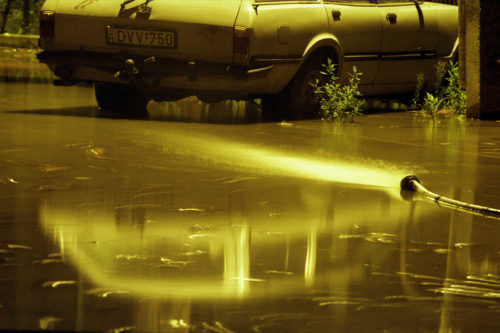Being 2860 metres long, Danube is the second longest river of Europe. The size of its basin until Budapest is 183250 square kms, which is twice as much as the whole territorry of Hungary. The average runoff is 2400 cubic metres per seconds. The standard high-water mark at Budapest has been 8.67 metres since the icy flood of 1876. Water table fluctuation of the river is more than 8 metres, the 24-hour rate might even reach 2 metres. Climate change causes serious floods more often than ever in Central Europe. Huge rainings and waters coming from the melting glaciers of the Alps meet in the basin of Danube. The river simply cannot cope with the enourmous amount of water. During the last decade there were three enourmous floods on the river Danube. High water marks hit hundred-year-old records along the German, Austrian, Slovakian and Hungarian streches.
On 8th August, 2002 the water table of the river started to rise intensively, and three days later with a near 4-metre rising it flooded the quay of Buda. Just after a one and a half day of sinking an extremely big flood wave arrived on 13th and it reached its top on 18th with 848 centimetres. (845 centimetres was the level of the river table in 1965, at the time of the former biggest flood…) Four years later on 3rd April, 2006 the level reached and hit the record of 2002 and it reached its top at a twelve centimetres higher rate, 860 centimetres. Several roads had to be closed, bus routes modified, and the tunnel of the underground was leaking as well. An even higher level, 895 centimetres was recorded at the capital in 2013.
There is an urgent need to do something against the phenomenon by strengthening flood control and developing dikes and barriers. According to a report made in 2011, the barriers stand in need of a full renovation due to their age. For several kilometres along the river mostly out-of-date barriers can be seen which are in strong need of a renovation and have reached their generally planned endurance – like buttresses of the quays, most of which are more than a century old, even bearing the traces of wars.


